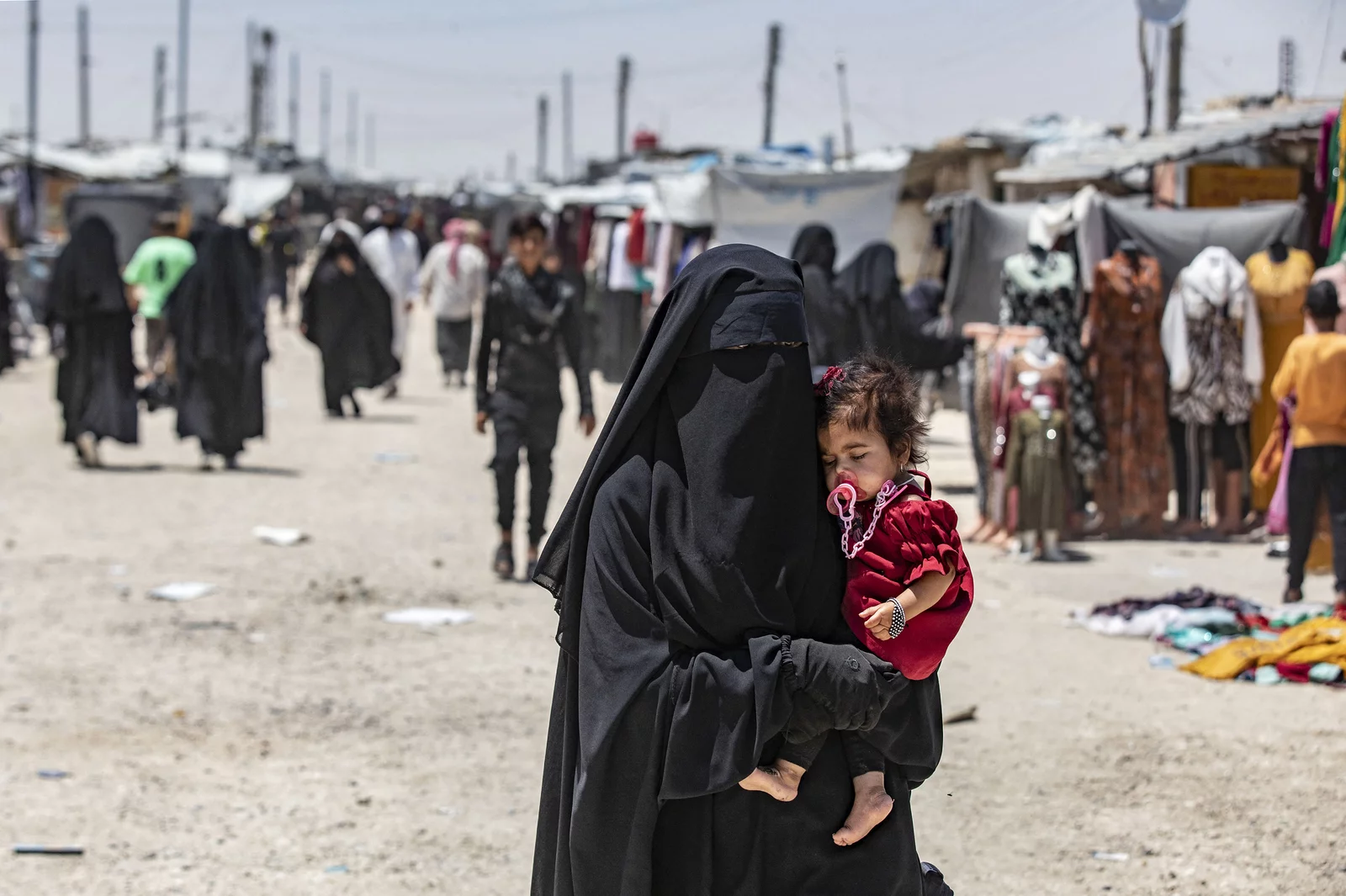The U.S. Moves Ahead with Damascus Partnership to Combat ISIS and Oversee ISIS Camps

Following the removal of sanctions on Syria, the White House statement said the administration will monitor progress on key priorities, including “helping the United States prevent a resurgence of ISIS, and assuming responsibility for ISIS detention centers in northeast Syria.”
Context: This confirms what has been emerging over the past two months: the US wants to transfer responsibility for guarding the nearly 25 ISIS detention centers in northeast Syria to the Damascus government. These facilities house an estimated 10,000 to 12,000 ISIS militants, while al-Hol and Roj camps contain nearly 37,500 family members of ISIS fighters.
Analysis: This confirmation is significant as it touches on the two central pillars of the partnership between the Syrian Democratic Forces (SDF) and U.S.-led Coalition forces. The ISIS detention facilities have given the SDF considerable geopolitical leverage, particularly because they hold around 12,000 foreign nationals—primarily from Europe—whose home countries have largely refused to repatriate them. These include approximately 3,000 foreign ISIS fighters and about 9,000 of their women and children. This situation has enabled the SDF to position itself as the world’s frontline defense against ISIS, earning it sustained Western backing and international recognition in return.
The camps housing militants’ families carry equal political significance. Despite a recent visit by the Damascus government to al-Hol camp, the SDF has repeatedly argued that both the camps and detention centers should remain under their control and won’t be handed over to the Syrian government. They understand that if these facilities are handed over to the Syrian government, they will lose one of their most important bargaining chips, weakening their position in ongoing negotiations to integrate into the Syrian army. Additionally, given that the ISIS detention centers are scattered across Hasakah and Raqqa provinces, if control over them is handed over to the Syrian government, it would mean Damascus-affiliated forces would need to return to areas that are now firmly under SDF control.
ISIS Detention Centers in Northeast Syria
Population Data for Camps and Prisons (2024-2025 Estimates)
45-50k
Total Individuals
~37,500
In Camps (Families)
~12,000
In Prisons (Fighters)
~12,000
Foreign Nationals
Camps for Families (~37,500 Total)
Al-Hol Camp
SE Hasakah Governorate| Syrians | ~15,861 |
| Iraqis | ~15,681 |
| Foreigners (50+ nations) | ~6,385 |
| Total | 34,927 |
Data from Apr 2025. Foreigners are mostly women & children.
Roj Camp
Northern Hasakah Governorate| Foreigners | ~2,600 |
| Syrians/Iraqis | Minimal |
| Total | ~2,600 |
Holds almost exclusively foreign women and children.
Foreigners in Camps
Al-Hol & Roj Combined| Total Foreign Women & Children | ~9,000 |
These individuals come from over 60 countries outside of Syria and Iraq.
Detention Facilities for Fighters & Boys (~12,000 Total)
Total Detainee Population
Across ~24 SDF-run facilities| Adult Suspects (Men) | ~10,000 |
| Minors (Boys) | ~2,200 |
Population spread across numerous sites.
Key Detention Sites
Locations in Northeast Syria| Al-Sina’a & Industrial School | Hasakah |
| Alaya & “Black” Prison | Hasakah |
| Juvenile & Ayed Prisons | Raqqa |
These are the principal known high-security facilities.
Foreigners in Detention
Spread across all prisons| Foreign Fighters (Men) | ~2,500 |
| Foreign Minors (Boys) | N/A |
Fighters from ~60 countries. No public data for minors.
Some pro-SDF voices remain hopeful about a Peshmerga-style model—akin to Iraqi Kurdistan’s autonomous forces—where the SDF would become the de facto army of a decentralized or federal region in northeast Syria. But the political landscape is far less accommodating. Arabs make up roughly 60% of the SDF’s ranks, and the group’s Kurdish core, the YPG, has been publicly labeled a PKK offshoot by none other than the U.S. envoy to Syria, Tom Barrack. Barrack, who also serves as US ambassador to Turkey, appears particularly sympathetic to Turkish concerns and is a strong proponent of working with Syria’s current president, Ahmed al-Sharaa. Reports indicate that Barrack is scheduled to meet with SDF commander Mazloum Abdi for their first face-to-face meeting in Erbil, though the direction of these discussions remains unclear.
Also significant in the White House statement is the explicit mention of cooperation with the Syrian government in the fight against ISIS. This marks a strategic shift, as the central justification for the U.S.–SDF alliance has long been the group’s utility as America’s boots on the ground against ISIS. Rumors had circulated—especially from pro-SDF sources—of a supposed joint operation between SDF and coalition forces. Diseminating this rumour appeared strategically timed to push back against the perception—particularly among pro-Damascus audiences—that the U.S. was pivoting toward the Syrian government. The underlying message from SDF-aligned circles appeared to be this: despite the U.S. envoy’s favorable statements toward President al-Sharaa, the SDF remains the United States’ active and operational partner on the ground. However, the SDF soon issued a statement denying any such campaign was underway. Interestingly, some unconfirmed reports claim that denial may have been prompted by the Coalition itself.
The broader picture suggests the U.S. is now prioritizing normalization between Damascus and Israel, with the SDF gradually sidelined. That said, the cases are interconnected. Israel is thought to favor a fragmented Syria to limit its regional power, while the U.S. appears more open to a unified, stable Syrian state—a view shared by both Damascus and Ankara. Washington may be trying to strike a balance between these diverging objectives.
While Barrack continues to insist that the SDF must be integrated both militarily and politically into the Syrian state, what is being prepared behind closed doors and what “integration” actually means remains unclear.









